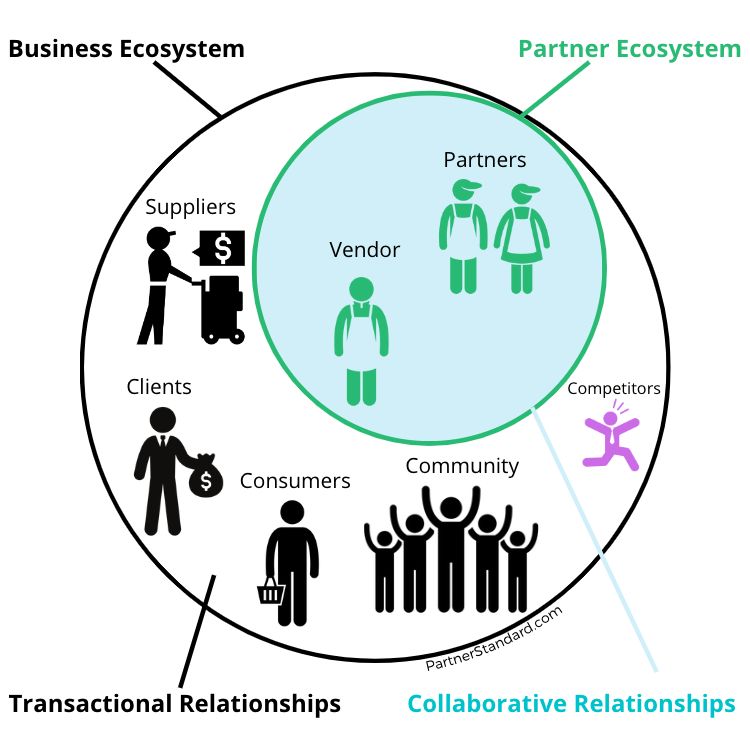Understanding the difference between transactional and collaborative relationships
Discover how collaborative partnerships differ from transactional sales relationships. Master the fundamentals of building long-term value.
Transactional business relationships are focused on individual transactions and exchanges of goods or services. These relationships are typically short-term and involve a clear exchange of value.
In contrast, collaborative business relationships involve a long-term partnership between two or more companies. These relationships are focused on mutual benefit and involve a level of cooperation and collaboration beyond simple transactional exchanges.
The illustration below demonstrates how collaborative relationships define the relationships of partner ecosystem members, whereas transactional relationships exist in the rest of the business ecosystem.

Supplier-customer relations are transactional relationships
- focus on exchanging value (good/services) for money
- aim to optimize this transaction process and to standardize the steps to avoid friction and increase output.
- risks and rewards are limited to each transaction and the goals are immediate, with customers seeking to fulfill needs and suppliers aiming to make sales.
- Legal ties are typically clear-cut, involving purchase orders and sales contracts that outline transaction specifics.
Partnerships in contrast are collaborative relationships
- built on mutual objectives and alignment
- aim to leverage each other's strengths and resources, focusing on long-term benefits and growth opportunities
- risks and rewards are shared, with both parties invested in the success of the partnership, often involving joint projects or initiatives
- commitment is deeper, with a focus on sustained cooperation and shared strategic goals
- Legal ties center on collaboration methods, defining roles, responsibilities, and frameworks for joint decisions and resolving conflicts.
